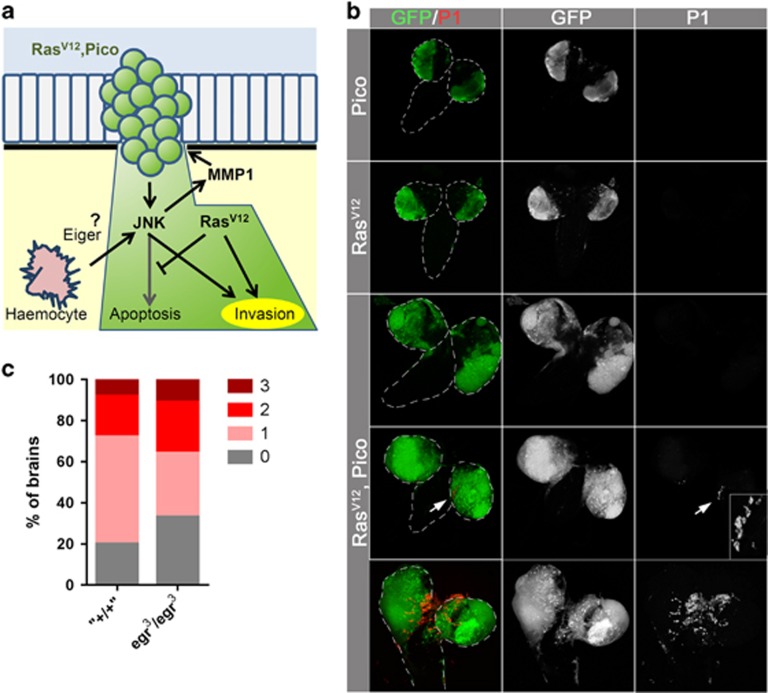Figure 4.
Invasion is not driven by haemocyte recruitment and TNF/Eiger-dependent signalling. (a) Possible model of extrinsic signalling from haemocytes to JNK activation in tumours. In the absence of RasV12, activated JNK leads to cell death, whereas in its presence, cell death is suppressed and JNK promotes Mmp1 expression. Consequently, JNK and RasV12 cooperate to drive tumour cell invasion. TNF/Eiger-secreting haemocytes that are recruited to sites of certain primary tumours, for example scrib−/− RasV12, have been reported to be capable of providing extrinsic cues that trigger JNK activation, raising the possibility this is also the case for pico RasV12 tumours. (b) Images of dissected brains showing distribution of haemocytes, as detected with an anti-NimC1 P1 antibody. Haemocytes were not detected in brains expressing pico or RasV12 alone. In pico or RasV12 brains, haemocytes were sometimes observed at sites of invasion, but this was not a necessary outcome. (c) Graph summarizing extent of invasion in the different genotypes (n=100 brains of each type).

